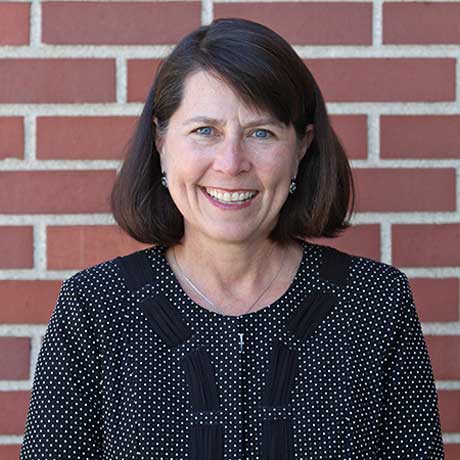
CATALYST researchers near conclusion of four-year study of inpatient portal
By Tyler Griesenbrock
CATALYST scientific editor
Published June 16, 2020
 Ann Scheck McAlearney, ScD, MS, a Professor in the Department of Family and Community Medicine and Principal Investigator for the study, received nearly $1 million in funding in an R01 grant from the Agency for Healthcare Research and Quality (AHRQ) to conduct this research with faculty and staff researchers within CATALYST – the Center for the Advancement of Team Science, Analytics, and Systems Thinking in Health Services and Implementation Science Research that she directs in the College of Medicine.
Ann Scheck McAlearney, ScD, MS, a Professor in the Department of Family and Community Medicine and Principal Investigator for the study, received nearly $1 million in funding in an R01 grant from the Agency for Healthcare Research and Quality (AHRQ) to conduct this research with faculty and staff researchers within CATALYST – the Center for the Advancement of Team Science, Analytics, and Systems Thinking in Health Services and Implementation Science Research that she directs in the College of Medicine.
AHRQ, part of the U.S. Department of Health and Human Services, is the lead federal agency dedicated to improving the safety and quality of the health care system in the United States.
When conceptualizing the project, Dr. McAlearney and her colleagues capitalized on the Ohio State Wexner Medical Center’s decision to deploy Epic Systems’ inpatient portal, MyChart Bedside, across its hospitals. That implementation offered an opportunity for Dr. McAlearney and her multi-disciplinary team to design a pragmatic randomized controlled trial to study how the inpatient portal was introduced and used across the health system, and to this new tool.
The study, known as High Tech and High Touch, or HT2, has assessed the effect of the inpatient portal technology and associated patient training on both overall use of the tool and the experiences of patients with access to the portal.
“This study has given us the opportunity to explore how to engage patients with new health information technology, as well as learn how training can impact patients’ use of the new technology,” Dr. McAlearney said.
In addition to studying the main questions posted in the grant, researchers with CATALYST have explored multiple avenues of inquiry during the course of the study.
“This has been going on for four years, and we’re at an exciting time where we’re pulling together results,” said Daniel Walker, PhD, MPH, an Assistant Professor in the Department of Family and Community Medicine and a core faculty member with CATALYST. “Our findings in this area are helpful to provide guidance to the institution, as well as other institutions, as they deploy the technology to empower patients.”
“We’ve learned that inpatient portals can support collaboration between the patient and health care team members. Our results also suggest that how health care systems implement and support portal use can make a difference,” said Cynthia Sieck, PhD, MPH, also an Assistant Professor in the Department of Family and Community Medicine and a core faculty member with CATALYST.
The group’s most recent work in this area, “Helping Patients Be Better Patients: A Qualitative Study of Perceptions About Inpatient Portal Use,” has been published online ahead of print, appearing in Telemedicine and e-Health.
That article was based on interviews with hundreds of care team members and patients to learn about their use of the inpatient portal and its influence on patients’ experiences, finding that the inpatient portal was perceived to help patients be more informed about their health and enable them to be more involved in their own care.
The CATALYST team also recently published a paper in Applied Clinical Informatics titled “Facilitating Organizational Change to Accommodate an Inpatient Portal.” In that publication, team members found that management and organizational changes were required to see the inpatient portal used to its full potential, and that several strategies were beneficial for a successful implementation.
Those are just the two most recent publications in a series of articles the CATALYST team has produced while looking at the inpatient portal. HT2 is part of a portfolio of research projects that have explored the implementation and use of health information technologies and have featured collaboration from many additional faculty and staff members at Ohio State including Naleef Fareed, PhD, MBA, an Assistant Professor in the Department of Biomedical Informatics; Alice Gaughan, MS, the Research Manager for CATALYST; Lindsey Sova, MPH, a project manager with CATALYST; Jennifer Hefner, PhD, MPH, an Assistant Professor in Health Services Management and Policy in the College of Public Health; and Timothy Huerta, PhD, MS, a Professor in Family Medicine and Biomedical Informatics as well as the Chief Research Information Officer for the Ohio State Wexner Medical Center and the Ohio State College of Medicine.
Drs. Huerta, Sieck, Walker, and Hefner serve as Co-Is for the study, along with Milisa Rizer, MD, MPH, Professor of Clinical Family Medicine at Ohio State, Professor of Nursing and a Professor of Biomedical Informatics, and the Chief Medical Information Officer for the Ohio State Wexner Medical Center; and Susan Moffatt-Bruce, MD, PhD, now the CEO of the Royal College of Physicians and Surgeons of Canada who was previously the Executive Director of the University Hospital at the Ohio State Wexner Medical Center.
“Completing our analyses around the effect of the training and the technology will help highlight future opportunities to build the evidence base around the best ways to implement this technology and support patients,” Dr. Walker said. “This work has identified many opportunities for future research related to patient technology use at the bedside. The CATALYST team is busy moving the frontier of the science forward in this realm.”
For more information about CATALYST and the work done at the Center, visit https://wexnermedical.osu.edu/departments/catalyst-center.
